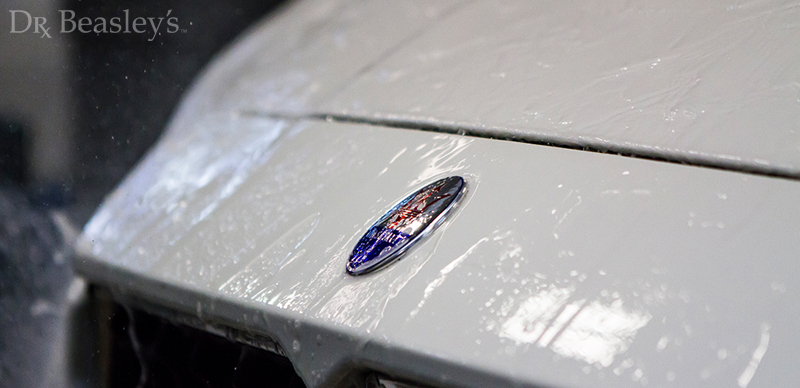Having good beads on a car after a rain storm may look great, but what about it’s equally talented and misunderstood younger brother? Sheeting.
Beading and sheeting both have their merits and downsides. However, what’s best for your car and what do you prefer? Let’s outline a few of the pros and cons of each:
Beading:
Pros:
- When you see beads, you can tell your car is protected by a sealant, wax, or other coating.
- It looks really cool to see all those tiny beads on the car.
- The beads run off the car while driving.
Cons:
- The beads sitting on the surface can causing spotting or etching, whether in the coating or the paint.
- If there are contaminants in the water like acid rain or other stuff, it can work it’s way to etch all the way to the paint.
Sheeting:
Pros:
- Water runs off the surface almost completely, leaving behind a dry vehicle.
Cons:
- It’s not easy to tell the surface is protected because you don’t get a visual indication.
- Doesn’t have that cool aesthetic look
Surface Tension:
A coating itself can help alter the water’s surface tension to alter the way water lies on a car. Without going into too much detail here, look out for our future article on the science of beading and sheeting.
Surface tension is basically the ability of a liquid to adhere to its neighboring water molecules. There are two external forces acting on each water droplet, gravity and the surface of the car. When there’s a high surface tension, you get a lot of smaller beads. When there’s low surface tension, you get bigger beads.
On a long time neglected car, you likely get a really low surface tension that basically just “globs” on the surface with no real form to it. However, when you scientifically decrease surface tension enough with the use of a coating, you get sheeting. The surface tension is low and slick enough that the water slides off of the surface.
Each Product Can Do Both:
Both beading and sheeting can occur on any surface, regardless of whether it’s protected or not. Say, for example, someone puts a coating on a car that’s designed to bead; in an incredibly heavy rain the water will likely sheet off the surface. And on the other end of the spectrum, a car with a sheeting coating or no coating at all can form beads when sitting outside in a light rain.
Beading and sheeting can work in tandem with each other depending on the situation they’re in. It’s the result after the water stops falling that we look for. Would you prefer beads or sheeting to happen?
Synopsis:
Beading does look really cool and many people look for beads after they’ve coated their car. However, those beads that sit on the surface can be harmful. Just about any water that would hit someone’s car has some contaminants in it. Rain or water from a sprinkler system usually contains some minerals that can eat through a coating if given enough time. However, those beads do make it easy to dry off the car, so etching can easily be prevented.
Sheeting doesn’t look nearly as cool. It’s also very hard to tell if your car is protected because sheeting is hard to see in any natural environment. However, that sheeting does leave a particularly dry surface behind which could lengthen the coating’s lifespan.

